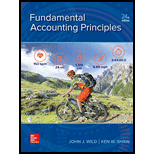
Concept Introduction:
Accounting is an important aspect for any business. Without proper accounting, the business owners would not be able to identify the incomes earned or the losses incurred. They will not be able to know whether they are earning something or not. So, accounting is the essence of the business and without accounting the business has no sense.
To discuss:
The difference between cash basis and accrual basis of accounting.
Explanation of Solution
There are two ways of recording transactions under accounting. One is cash basis and another is accrual basis of accounting.
Under cash basis of accounting, the transactions are recorded as soon as cash element is involved. Under the accrual basis of accounting, transactions are recorded upon the happening of an event irrespective of the fact that whether the case is involved in the transaction or not.
The main difference between the two methods is the timing when the transactions are recorded. Under cash method of accounting, income and expenses are recorded when the cash has been received or paid. On the other hand, under accrual method of accounting, the transactions are recorded on the happening of the event even if the cash has not been received or paid. The most acceptable method of accounting is the accrual method of accounting.
For example, if the goods are purchased in cash, then the transaction will be recorded under both the methods. But if the goods are purchased on credit, then the transaction will be recorded under the accrual method of accounting but will not be recorded under the cash method of accounting, since cash is not involved.
Want to see more full solutions like this?
Chapter 3 Solutions
Fundamental Accounting Principles
- I am trying to find the accurate solution to this general accounting problem with the correct explanation.arrow_forwardThe balanced scorecard approach includes _.arrow_forwardMichiko Industries uses flexible budgets. At a normal capacity of 25,000 units, the budgeted manufacturing overhead is $75,000 variable and $300,000 fixed. If Michiko Industries had actual overhead costs of $385,500 for 27,000 units produced, what is the difference between actual and budgeted costs?arrow_forward
- Please provide the correct answer to this general accounting problem using valid calculations.arrow_forwardPlease provide the accurate answer to this general accounting problem using valid techniques.arrow_forwardNaiya Enterprises reported the following results from last year's operations: Sales $2,250,000 Variable expenses $900,000 Contribution margin $1,350,000 Fixed expenses $850,000 Net operating income $500,000 Average operating assets $1,600,000 This year, the company has a $320,000 investment opportunity with the following cost and revenue characteristics: Sales $480.000 Contribution margin ratio 55% of sales Fixed expenses $160,000 The company's minimum required rate of return is 11%. What is the margin % related to this year's investment opportunity?arrow_forward
- The company's statement of cash flows for 2022 reported $860,000 of cash received from customers.arrow_forwardCan you solve this general accounting problem with appropriate steps and explanations?arrow_forwardI need guidance with this general accounting problem using the right accounting principles.arrow_forward

 AccountingAccountingISBN:9781337272094Author:WARREN, Carl S., Reeve, James M., Duchac, Jonathan E.Publisher:Cengage Learning,
AccountingAccountingISBN:9781337272094Author:WARREN, Carl S., Reeve, James M., Duchac, Jonathan E.Publisher:Cengage Learning, Accounting Information SystemsAccountingISBN:9781337619202Author:Hall, James A.Publisher:Cengage Learning,
Accounting Information SystemsAccountingISBN:9781337619202Author:Hall, James A.Publisher:Cengage Learning, Horngren's Cost Accounting: A Managerial Emphasis...AccountingISBN:9780134475585Author:Srikant M. Datar, Madhav V. RajanPublisher:PEARSON
Horngren's Cost Accounting: A Managerial Emphasis...AccountingISBN:9780134475585Author:Srikant M. Datar, Madhav V. RajanPublisher:PEARSON Intermediate AccountingAccountingISBN:9781259722660Author:J. David Spiceland, Mark W. Nelson, Wayne M ThomasPublisher:McGraw-Hill Education
Intermediate AccountingAccountingISBN:9781259722660Author:J. David Spiceland, Mark W. Nelson, Wayne M ThomasPublisher:McGraw-Hill Education Financial and Managerial AccountingAccountingISBN:9781259726705Author:John J Wild, Ken W. Shaw, Barbara Chiappetta Fundamental Accounting PrinciplesPublisher:McGraw-Hill Education
Financial and Managerial AccountingAccountingISBN:9781259726705Author:John J Wild, Ken W. Shaw, Barbara Chiappetta Fundamental Accounting PrinciplesPublisher:McGraw-Hill Education





